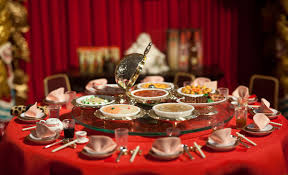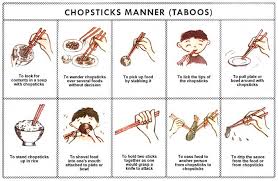Chinese Table Etiquette: A Comprehensive Guide
Chinese table etiquette is deeply rooted in tradition and plays a significant role in Chinese culture. Whether you're dining in China or at a Chinese restaurant abroad, understanding the proper etiquette can enhance your dining experience and show respect for the host. In this guide, we'll delve into the intricacies of Chinese table manners, covering everything from seating arrangements to dining customs.
1. Seating Arrangements
In Chinese culture, seating arrangements at the dining table are often based on hierarchy and respect. The most honored guest or the eldest family member typically sits at the head of the table, facing the entrance or with their back to the wall. Other guests are seated in descending order of importance, with the host usually sitting opposite the guest of honor.

chinese table etiquette
2. Table Setting
Chinese table settings may vary depending on the occasion and region, but there are some common elements. The table is often adorned with a tablecloth and decorative centerpieces, such as fresh flowers or fruit arrangements. Each place setting typically includes a pair of chopsticks, a small plate, a bowl for rice, and a soup spoon.
3. Dining Etiquette
- Chopstick Etiquette: When using chopsticks, avoid pointing them at others or sticking them upright in your rice, as this resembles funeral rituals. Instead, place them neatly on the chopstick rest or parallel to the edge of your plate.
- Sharing Dishes: Chinese meals are often served family-style, with multiple dishes placed in the center of the table for everyone to share. When serving yourself, use the serving utensils provided rather than reaching across the table with your chopsticks.
- Slurping: In Chinese culture, slurping soup or noodles is considered acceptable and even a sign of enjoyment. However, loud burping or other noisy eating habits are generally frowned upon.
4. Toasting Customs
Toasting, or "ganbei" in Chinese, is a common practice during meals and social gatherings. When making a toast, it's customary to hold your glass slightly lower than the person you're toasting to as a sign of respect. After clinking glasses, it's polite to take a sip, but avoid emptying your glass completely, as it may prompt others to refill it.

chinese table etiquette
5. Dining Taboos
- Turning Fish: In Chinese culture, it's considered unlucky to turn a fish upside down while eating, as it symbolizes capsizing a boat. Instead, gently lift the fish meat from one side to avoid flipping it over.
- Emptying Dishes: In Chinese dining etiquette, leaving a small amount of food on your plate signifies that you are satisfied. Clearing your plate entirely may imply that you're still hungry and could embarrass the host.
Mastering Chinese table etiquette is not only a sign of cultural awareness but also a way to show respect for your hosts and fellow diners. By following these guidelines on seating arrangements, table settings, dining customs, toasting traditions, and taboos, you can navigate Chinese dining experiences with confidence and grace. Embrace the rich heritage of Chinese cuisine and etiquette for a truly enriching culinary journey.